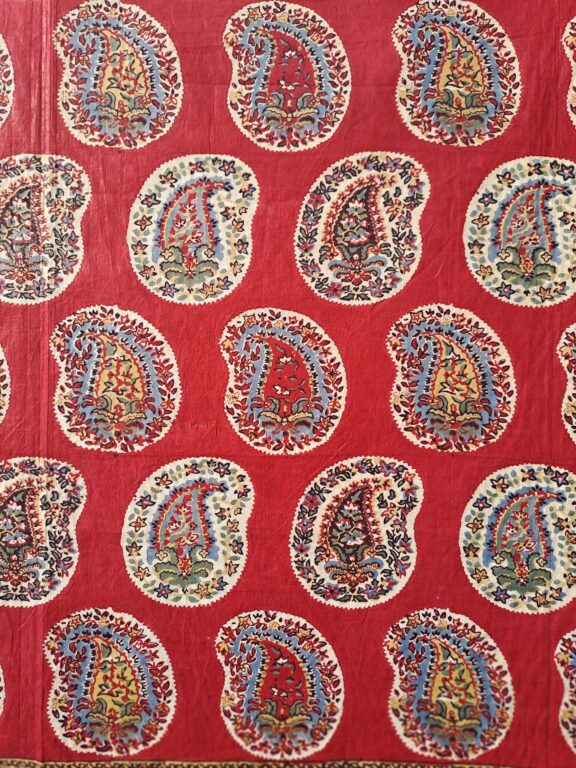Indian Chintz Panel
Description
This large Indian chintz panel dates to the late 19th century.
Its field design consists of rows of concentric flower filled botehs alternating between rows with tips facing to the right and those pointing to the left. They are all on a white ground and floating on a plain dark red ground, a colour most likely derived from an insect dye. Multiple borders frame the field.
The patterning is achieved by block printing on the very fine mordant- and resist-dyed glazed cotton suface.
The textile originally was almost certainly used as a palangposh, or bed cover, also referred to as a palampore, a bed or wall hanging aimed at the European market. It has been slightly reduced in length, with the original border at the top end re-instated to complete the “frame” around the field. The selvedges are intact.
A word on the etymology of the term chintz: “the English term for kalamkari, likely derived from the north Indian word chhint (meaning to sprinkle or spray) pluralised to ‘chints'” (Fotheringham, Avalon, The Indian Textile Source Book. Victoria & Albert Museum/ Thames & Hudson Ltd, London, 2019, p. 396. This publication is a very good, well structured source for referencing and identifying Indian textiles)
This textile is very crisp in the handle and the panel is in excellent condition.
£775


